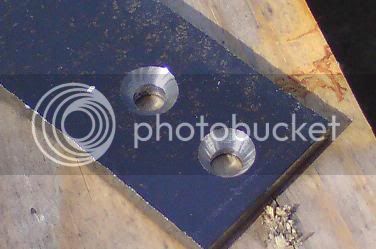condeesteso
Established Member
This is the 80 / 20 rule for hand tools - that after a while you realise that only about 20% of all the tools you keep near the bench get used regularly. Here's one of my much used ones, and why.
I have an assortment of countersinks acquired over the years, from a ropey Draper from years back, to a Lie Nielsen - but the one I reach for almost every time is the Axminster chatter-free 5-10mm. I have it fixed in a hand drill (in my case a nice old Millers Falls, but any will do). It cuts the cleanest symmetrical c'sinks of any of them, and cuts them faster too. I plan to get another to fit to a short stubby handle, for getting into tight spaces.
Interestingly I hardly ever reach for the Lie and it may be pretty but it doesn't work great... the Axminster at £8.50 is a truly ace tool.
I have an assortment of countersinks acquired over the years, from a ropey Draper from years back, to a Lie Nielsen - but the one I reach for almost every time is the Axminster chatter-free 5-10mm. I have it fixed in a hand drill (in my case a nice old Millers Falls, but any will do). It cuts the cleanest symmetrical c'sinks of any of them, and cuts them faster too. I plan to get another to fit to a short stubby handle, for getting into tight spaces.
Interestingly I hardly ever reach for the Lie and it may be pretty but it doesn't work great... the Axminster at £8.50 is a truly ace tool.







